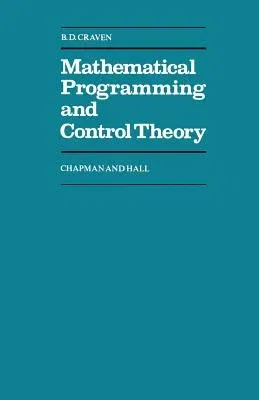In a mathematical programming problem, an optimum (maxi- mum or minimum)
of a function is sought, subject to con- straints on the values of the
variables. In the quarter century since G. B. Dantzig introduced the
simplex method for linear programming, many real-world problems have
been modelled in mathematical programming terms. Such problems often
arise in economic planning - such as scheduling industrial production or
transportation - but various other problems, such as the optimal control
of an interplanetary rocket, are of similar kind. Often the problems
involve nonlinear func- tions, and so need methods more general than
linear pro- gramming. This book presents a unified theory of nonlinear
mathe- matical programming. The same methods and concepts apply equally
to 'nonlinear programming' problems with a finite number of variables,
and to 'optimal control' problems with e. g. a continuous curve (i. e.
infinitely many variables). The underlying ideas of vector space, convex
cone, and separating hyperplane are the same, whether the dimension is
finite or infinite; and infinite dimension makes very little difference
to the proofs. Duality theory - the various nonlinear generaliz- ations
of the well-known duality theorem of linear program- ming - is found
relevant also to optimal control, and the, PREFACE Pontryagin theory for
optimal control also illuminates finite dimensional problems. The theory
is simplified, and its applicability extended, by using the geometric
concept of convex cones, in place of coordinate inequalities.


